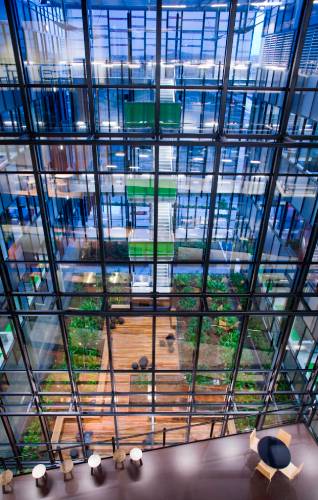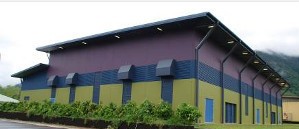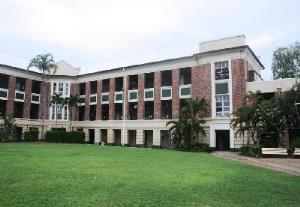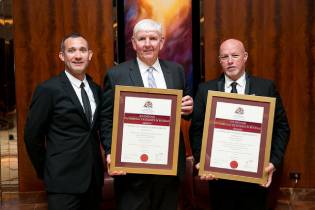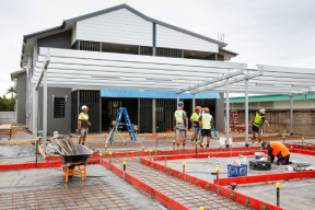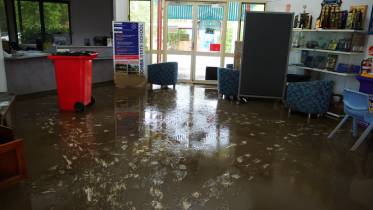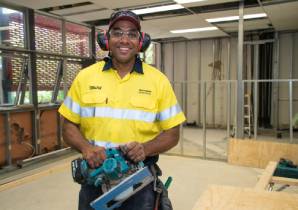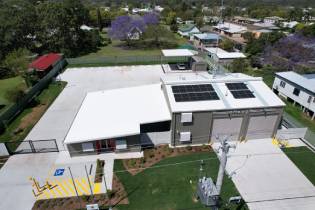Celebrating Public Works in Queensland
In1862, the original Lands and Works Department was formed to oversee a large building works program in the newly established state of Queensland.
In the years since, Public Works has been responsible for the design, construction and management of public buildings, including schools, hospitals, housing, cyclone shelters, bridges, sporting stadiums and cultural centres.
Today, Public Works continues to provide policy and industry leadership to deliver a future built environment that is sustainable and innovative.
Through the years
Explore our history and achievements since 1862. Click on each image to find out more.
1860s to 1890s
1862
The Lands and Works Department is established to oversee a rapid and extensive building works program in the newly formed Colony of Queensland.
In the same year, construction of the Governor's residence in Brisbane, the first major public building in Queensland, is completed.
Colonial Architect, Charles Tiffin, designs the building as both a private residence and official state office for Governor Bowen, Queensland's first governor.
Today, the heritage-listed building is known as Old Government House and stands in the grounds of the Queensland University of Technology. It is considered one of the state's most significant historical buildings.
1866
The Lands and Works Department is divided into the Lands Department and the Public Works Department.
1867
The new Brisbane Hospital opens its doors, the first of two to be built at Herston, replacing the original hospital in George Street. The Women's Hospital follows in 1938.
Designer and Colonial Architect, Charles Tiffin, reports that the site of the hospital at Bowen Bridge Road has been well chosen, despite initial fears the location would be too far from the town centre. The new site is in an elevated position overlooking parkland and its light and well- ventilated design is much more suited to patient recovery than the previously located hospital in George Street.
Today, the amalgamated Royal Brisbane and Women's Hospital, is the largest and busiest hospital in Queensland, providing more than one million episodes of life-saving treatment each year.
1868
Queensland's first Parliament moves into a new purpose-built home after eight years of sittings in an old convict barracks.
Following an Australia-wide competition to design the new House, Colonial Architect Charles Tiffin wins first prize for his French Renaissance style design.
Although Tiffin hoped the building would be ready in just three years, numerous delays means the project takes much longer to complete and proves costly. In fact, when Parliament meets for the first time, the ground floor is still occupied by tradespeople, the staircase has only a temporary railing and the plaster is wet.
Despite criticism around Tiffin’s apparent lack of cost-management skills, the government’s first architect goes on to oversee the construction of more than 300 buildings in Queensland including Customs House in Brisbane and the Sandy Cape Lighthouse on Fraser Island.
In most cases, the lighthouses are constructed of a hardwood frame on a concrete base sheeted with galvanised iron. Most are designed by the Office of the Colonial Architect and built to specifications provided by the Department of Harbours and Rivers.
Today, Parliament House continues to be used for its original purpose and is one of Brisbane’s best-known landmarks. The public can do tours of the House, and school excursions on sitting days allow students to see first-hand how the parliamentary process works.
Learn more about how Charles Tiffin built Queensland’s Parliament House.
1886
Construction commences on the Queensland Government Treasury Building in Brisbane. The Public Works Department is one of several departments whose offices are moved to the new public administration building. The Queensland Government Cabinet continues to meet in the building until 1905.
Today, the Treasury Building accommodates a casino.
1887
The Public Works Department merges with the Mines Department.
1889
Brisbane landmark Customs House opens. The building serves as a collection centre for customs duty on imported products, a particularly important function during a time when the manufacturing sector is only slowly developing.
With work commencing in 1886, this building by the Office of the Colonial Architect takes three years and costs £38,346 ($72,692) to build.
Known for its distinctive copper dome, the building features a depiction on its facade of a shield between an emu and kangaroo. This is despite there being no government in the country with a coat of arms at this time.
1890
The Public Works Department is established from the former Mines and Works Department.
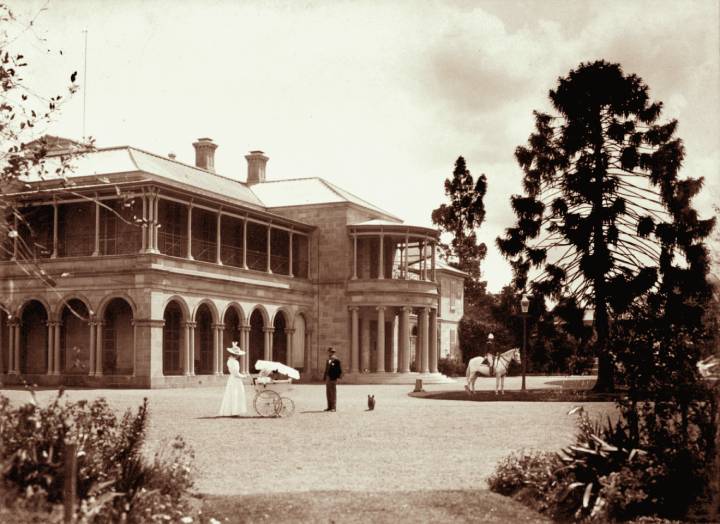
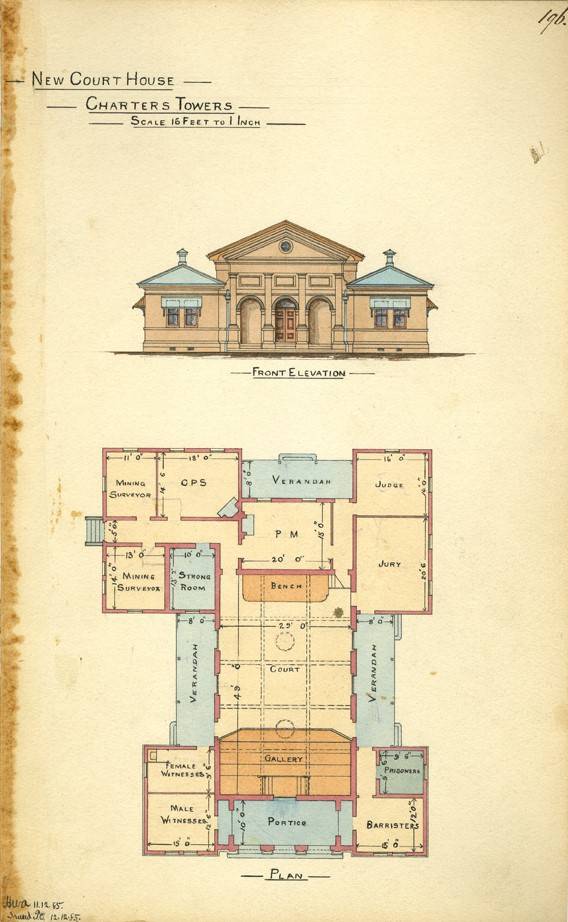
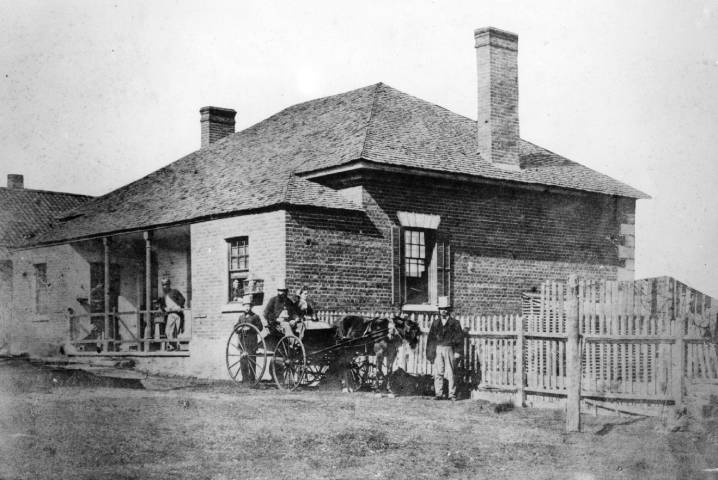
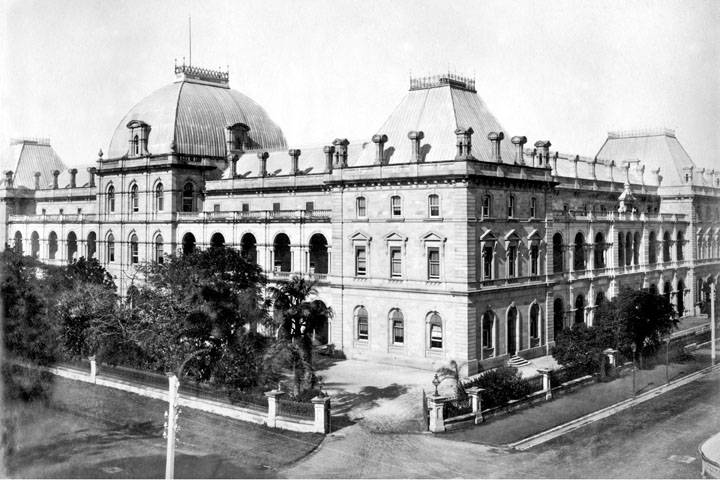
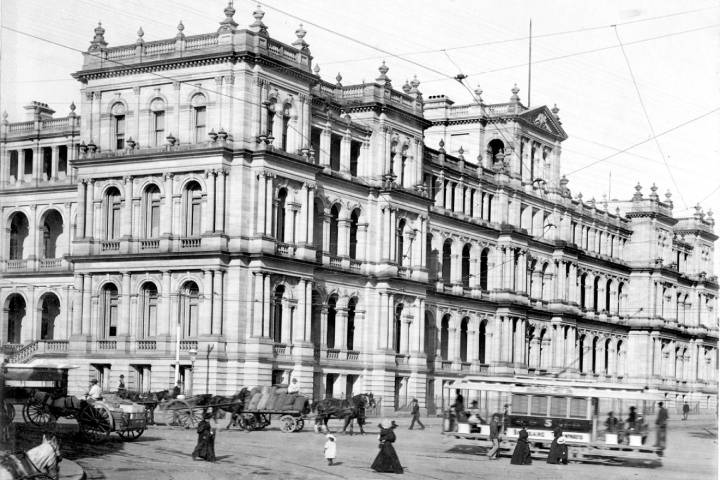
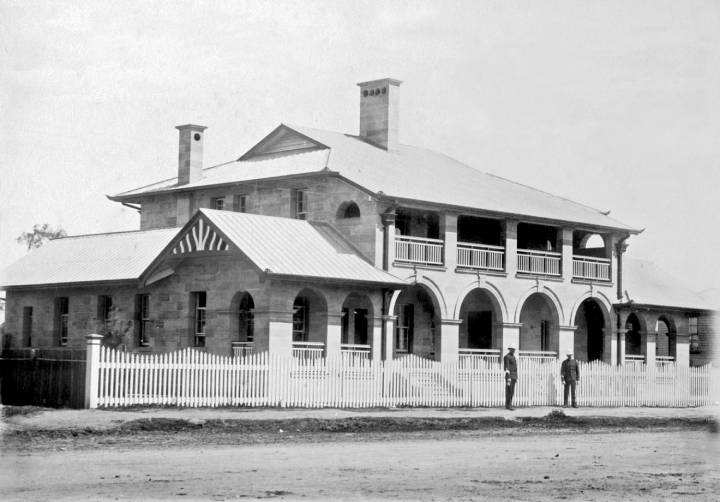
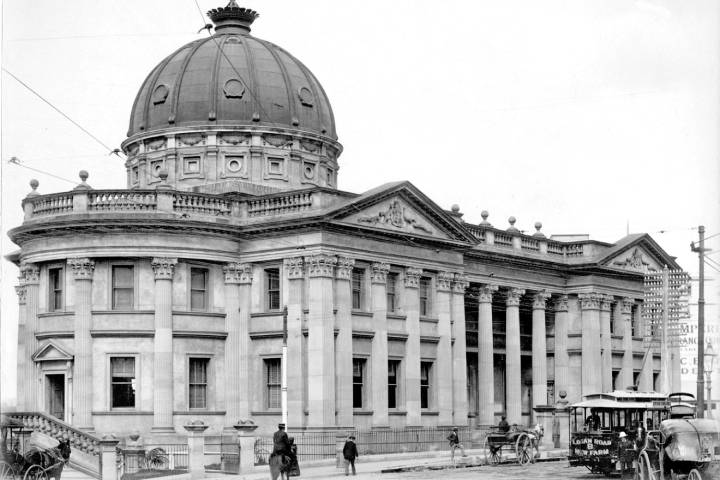
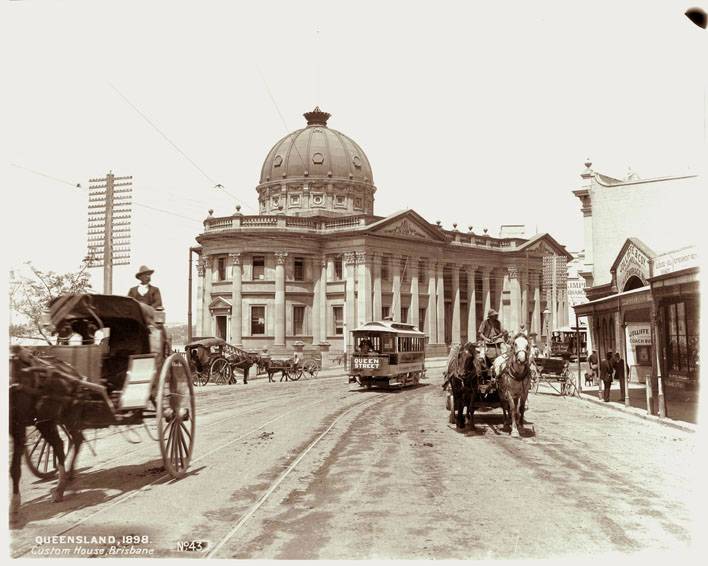
1900s to 1960s
1910
Queensland's first university, the University of Queensland, is established at Old Government House in George Street, Brisbane. The Public Works Department is tasked with transforming the building into a university. A total of 83 students are enrolled on opening.
The rapid expansion of the university sees it outgrow its inner-city location and move to the suburb of St Lucia. Construction starts in 1937 under the Bureau of Industry. By 1946, responsibility has moved to the Public Works Department.
Today, over 55,000 students are enrolled at the university.
1937
Work is completed on the Nanango Court House, a single-storeyed timber building replacing the former courthouse erected in 1912. The courthouse is designed by the Department of Public Works. Andrew Baxter Leven is Chief Architect.
Its visual appeal and architectural design reflects the high standard of government buildings designed by the Department of Public Works during the early-mid 20th century.
During the 1840s, the pastoral stations of Taromeo, Nanango and Tarong in the South Burnett district of Queensland are taken up by selectors.
Gold is discovered in the Nanango district during the 1860s, and although the gold mining activity never lives up to the high expectations of the miners, it succeeds in attracting people to the area.
With this expansion, additions are made to the Nanango courthouse and lock-up, built during the late 1850s.
By the early 1910s, there is antagonism between the towns of Kingaroy and Nanango as they vie for supremacy in the district.
Nanango provides the headquarters of the official staff of government departments such as Justice and Lands, and the town is given a boost in 1912, when the District Court of Nanango is established to serve the Petty Sessions Districts of Nanango, Weinholt and Kilkivan.
With the anticipated expansion of official business by the court, a new courthouse is erected at Nanango in 1912.
By 1936, a new courthouse is again required, and plans are prepared.
The architecturally designed building at 30 Henry Street is completed in August 1937, and includes offices for the Dairy Inspector, Stock Inspector, Clerk of Petty Sessions and Land Ranger. The former courthouse built in 1912 is sold for removal.
The courthouse is added to the Queensland Heritage Register in 1995.
Today, the building survives as an important illustration of the pattern of Nanango’s development as an official centre for the South Burnett district, and is a good example of a timber courthouse in a provincial centre.
1939
The Department of Public Works' Townsville office becomes the epicentre for the department's work during the Second World War when the city becomes a major military base for both Australian and overseas Armed Forces.
Public Works staff are relocated to the area to assist with defence projects including the construction of the Garbutt Air Base, large warehouses at depots at Macrossan and Breddan, and a military hospital.
Substantial quantities of materials are required for these projects and procurement transportation is rapid. The department is also involved in procuring and sending food supplies.
As the war escalates, Townsville is deemed too dangerous for Works staff due to the imminent risk of bombing and invasion. It is decided that offices are to be moved to Charters Towers.
Staff remain in Charters Towers for several months. On the night of their return to Townsville, Japanese bombs are dropped on the city. Thankfully, no lives are lost and structural damage is minimal.
1945
Queenslanders celebrate the end of the Second World War on 15 August 1945.
Queensland faces a massive backlog of replacement, maintenance and refurbishment of old buildings and construction of new buildings brought about by six years of almost total diversion of funds to the war effort.
Work resumes on projects abandoned for the duration of the war, and includes new hospital maternity wards in response to the post-war ‘baby boom’.
1963
The Department of Public Works turns its attention to improving the design of public schools in the state – a reflection of the changing attitudes towards education.
Vast distances, scattered populations and limited resources means Queensland needs innovative education solutions.
Public Works assists by producing a standardised timber school design that is easy and economical to build, enabling the government to introduce education to developing areas of the growing state.
Designs between the 1920s and 1950s allow future extensions to buildings as student numbers rise. These sectional schools notably incorporate large areas of glazing in the southern walls of classrooms, providing left-hand side lighting for predominately right-handed students.
Primary schools move away from barrack-like designs to more varied shaped buildings that include colourful interiors and activity centres.
Alterations to standard design plans over the years – such as improvements in roof ventilation, window placement and building orientation – reflect a growing awareness of the needs of teachers and students.
By 1973, the emphasis in schoolroom design has changed to double teaching areas, with light tables and chairs which can be easily moved around to facilitate study and discussion groups in various parts of the classroom.
In 1981, Cabinet establishes a committee drawn from the Co-ordinator-General’s Department, the Education Department and the Public Works Department to review the design of primary schools.
Emphasis is to be given to designs which can facilitate community use of school buildings and grounds, use of transportable buildings to absorb short-lived peak school enrolments, and improved security against vandalism and fire which has become a major problem.
The development of secondary school design follows that of primary schools and accommodates changing teaching practices which includes greater use of laboratories, libraries and resource centres.
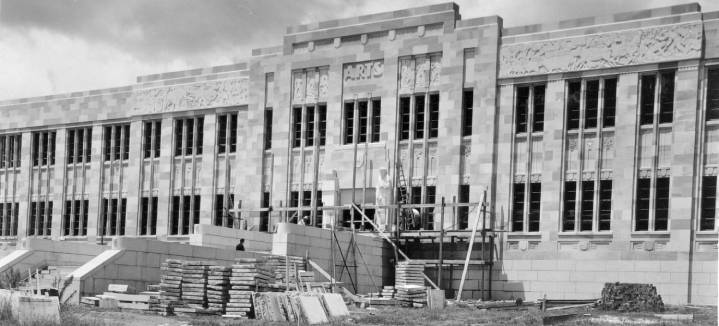
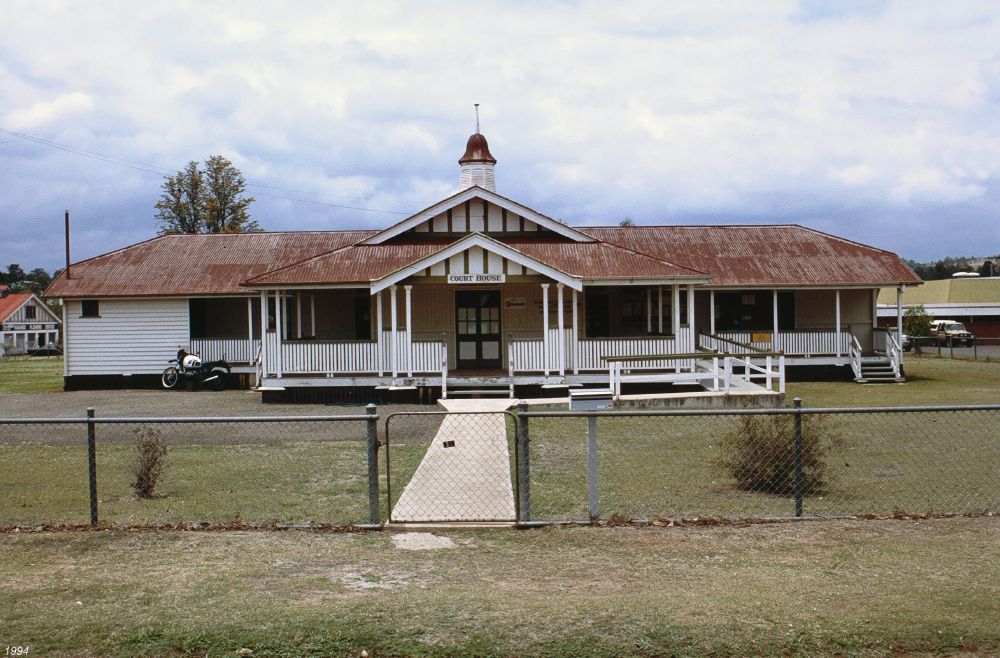
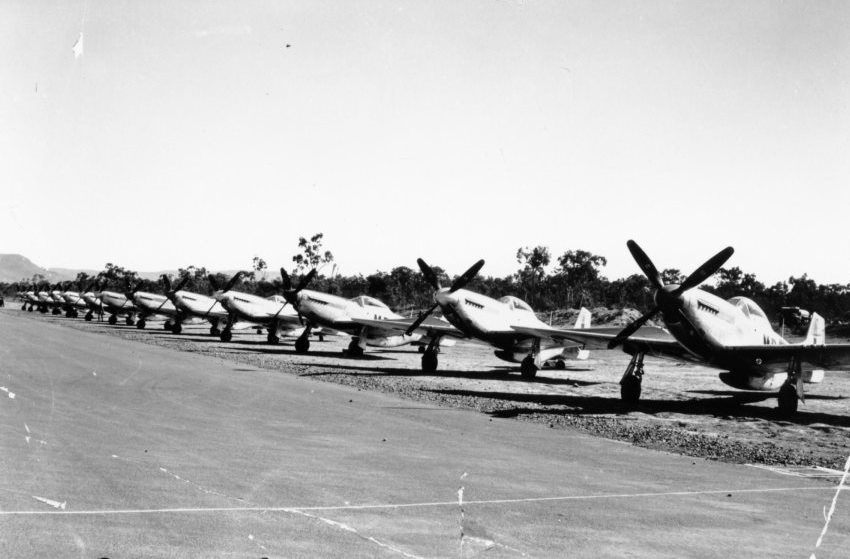
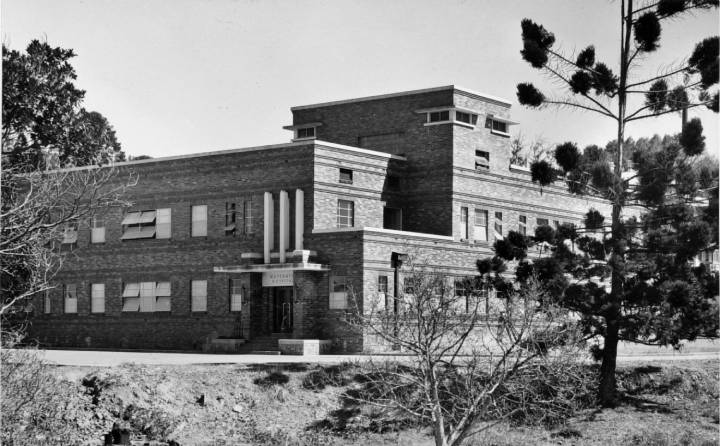
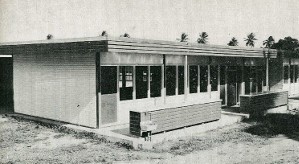
1970s to 1980s
1974
Floods devastate properties in Brisbane.
1975
Design begins on the most significant group of public buildings ever completed by the state – the Queensland Cultural Centre.
The Queensland Cabinet initially asks the Public Works Department to investigate the feasibility and construction cost of a new art gallery to replace the state's aging gallery in Bowen Bridge Road. The site nominated for the building is on the South Bank of the Brisbane River.
By January 1975, the project has expanded to include not only the Art Gallery but also a Performing Arts Centre, Museum and State Library. Together, these buildings become known as the Queensland Cultural Centre.
1982
The celebrated Robin Gibson-designed Queensland Art Gallery opens in Brisbane at a cost of $28 million. Robin Gibson and Partners are chosen to design the building after a two-stage competition is held by the Public Works Department. The building is awarded the Sir Zelman Cowen Award for Public Buildings.
Today, it is joined by the Gallery of Modern Art, which stands just 150 metres away and shares a close visual and physical connection.
1985
The Queensland Performing Arts Centre opens in Brisbane. The complex houses three theatres, large public areas and restaurants. The two main theatres, the Lyric Theatre and the Concert Hall, each accommodate 2,000 people and provide world-class venues for opera, theatre, ballet and concerts. The Performing Arts Centre is linked to the Art Gallery and Museum by a bridge and tunnel across Melbourne Street at South Bank.
1986
The Queensland Museum opens. One of four buildings which form the Queensland Cultural Centre, the museum's construction is managed by a Public Works Department team. The team also supervises construction of the Queensland State Library.
In the same year, the Government Precinct Development is officially opened by Premier and Treasurer of Queensland the Honourable Sir Joh Bjelke-Petersen. It incorporates the State Works Centre and the renovated Harris Terrace and The Mansions.
The renovation of Harris Terrace and The Mansions is significant as few terrace houses have ever been built in Brisbane and even fewer remain intact.
This is the first stage of an overall Government Precinct Development which is the area bounded by Elizabeth, George and Alice Streets and the Brisbane River.
The preservation of historical buildings and their integration into a modern urban environment and a coordinated relationship between the Botanic Gardens, Queens Park, the Brisbane River and all the open space within the Precinct, are very important aspects of this development.
The seven-level, 269 metre long State Works Centre approximates Parliament House parapet heights, and is deliberately restricted to respond to the historic buildings in the area. It is a total departure from the sheer glass towers that are being constructed around the city.
Harris Terrace, one of Brisbane’s rare terraces, is built in 1867 and is the oldest existing structure in George Street. The building is ‘modernised’ in 1922 and during that process loses its original colonnaded frontage.
When it comes time to renovate the building in 1985, architects from the Public Works Department rely on old photographs to reconstruct the original façade, as no plans of the original building exist.
Reconstruction work on the historical Mansions, a row of six terrace houses, commences in October 1982 with great attention to detail, resulting in the same high standard of finish as the original.
Although many of the buildings in the area are preserved, the historic Bellevue Hotel, built in the 1880s, is controversially demolished in 1979 to make way for the redevelopment.
During this same period, construction of the Executive Building at 100 George Street is undertaken. The building is home to the Department of Premier and Cabinet until its demolition in 2017 to make way for Queens Wharf Brisbane.
Today, Brisbane’s government precinct is embarking on a new era with an office tower at 1 William Street and the revitalisation of lower George Street.
1988
Thirteen years after the Queensland Government announces construction of the Queensland Cultural Centre in Brisbane, the final building is completed, the Queensland State Library.
The project is a major achievement for Public Works, creating a significant cultural mecca for the state.
1989
The Administrative Services Department is established which includes the former Public Works Department.
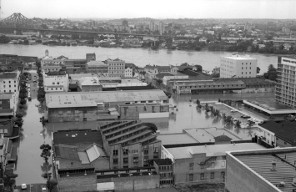
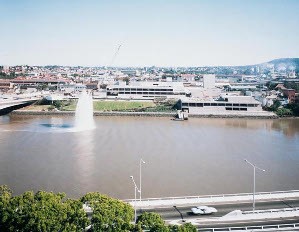
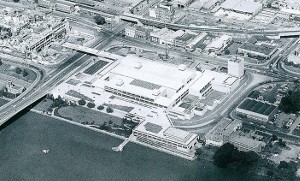
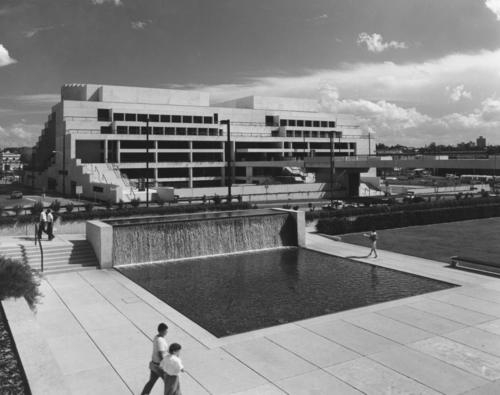
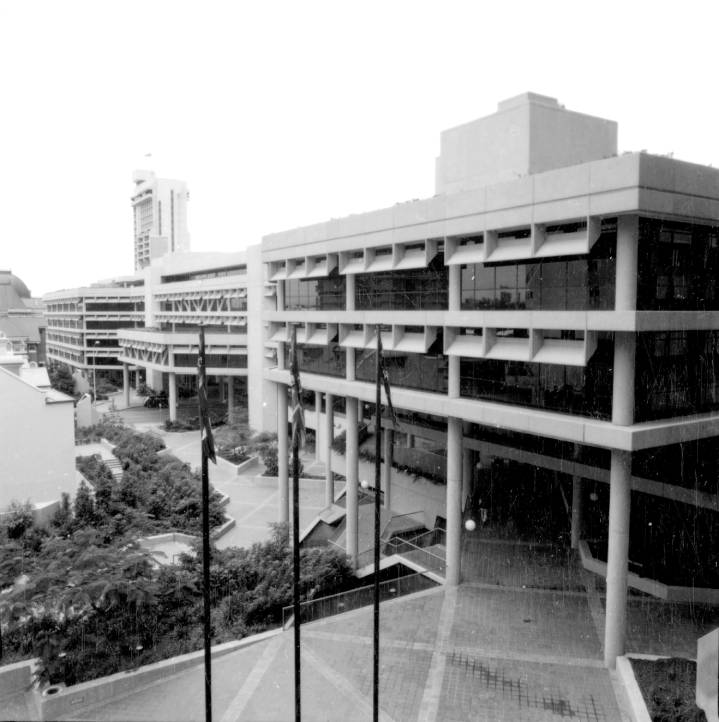
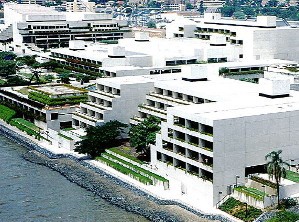
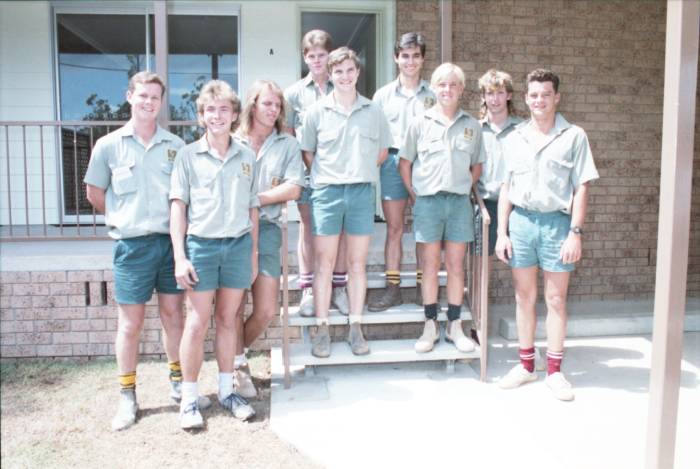
1990s to 2000s
1991
The historic Thomas Dixon Centre in Brisbane's West End is refurbished as a centre for dance and arts. The building is first used as a shoe factory in 1908 and then purchased by the Queensland Government in 1975 for use as a store.
Today, it is home to the Queensland Ballet.
1996
The Public Works and Housing Department is formed.
1998
The Public Works and Housing Department separates into two portfolios with the Department of Housing offices moving from Anzac Square to the new ‘Triple One’ George Street building.
1999
The Queensland Government releases plans to create a new parkland for Brisbane. The $72 million transformation of the old Roma Street rail yards is project-managed by the Department of Public Works and includes a 15ha subtropical recreational space. The parkland opens to the public in April 2001.
2001
The Department of Public Works wins the Royal Australian Institute of Architects' Harry Marks Sustainable Architectural Award for the design of Redcliffe City Council library and gallery. The emphasis on sustainable building design reflects increasing community concern about the environment.
In the same year, construction begins on the Suncorp Stadium (formerly Lang Park) redevelopment in Brisbane. The redevelopment is the biggest and most ambitious project of its kind ever undertaken by Public Works. It involves a significant expansion of the stadium and the implementation of extensive built infrastructure and technologically-advanced building systems.
The 52,500-seat world-class venue opens in 2003 – on budget and on time – and becomes home to the Brisbane Broncos rugby league team.
Today, it also hosts national and international rugby union and soccer games along with State of Origin matches and music concerts.
2002
The Department of Public Works is recognised for its heritage conservation efforts with a gold award, the John Herbert Heritage Award from the National Trust of Queensland, for the restoration of the 173-year-old convict-built Commissariat Store in William Street, Brisbane.
The Commissariat Store is one of only two surviving buildings from the convict period in Queensland. It is the second-oldest building in Queensland, dated to 1829, the oldest building being The Old Windmill in Brisbane’s Spring Hill, dated 1828.
The Commissariat Store is originally built by convict labour as a permanent Commissariat Store for the Moreton Bay Penal Settlement. The store procures, stores, and distributes goods and rations for the penal colony.
In 2011, a collapsed retaining wall at the Store provides a rare glimpse into Brisbane’s colonial past. Artefacts, including clay pipes, Victorian-era crockery and liquor bottles are discovered amongst the rubble.
Stonemasons from the Department of Public Works are called in to salvage original convict-cut blocks from the collapsed wall so that it can be reassembled in keeping with its heritage-listed status.
Today, the building operates as the headquarters for the Royal Historical Society of Queensland.
2003
William McCormack Place, project-managed by the Department of Public Works in Cairns, becomes the first commercial office building in Australia to achieve a five-star energy rating under the Australian Building Greenhouse Rating Scheme.
The Royal Brisbane and Royal Women's Hospitals are amalgamated to become the Royal Brisbane and Women's Hospital. The development includes procurement and contract management by the Department of Public Works.
2004
Construction of the $135 million Brisbane Magistrates Court is completed. The building contains a range of environmentally-sustainable design initiatives.
The construction of the Gold Coast Convention and Exhibition Centre also reaches completion. It comes in on budget and two months ahead of schedule.
The year sees the commencement of the Community Memorials Restoration Program, led by the Department of Public Works Accommodation Office. The Program is designed to help restore and preserve Queensland's unique and historical community markers, including the restoration of one of Queensland’s most historically significant sites, the Burke and Wills Camp 119 in Normanton.
In 1860-61, Robert O’Hara Burke and William John Wills lead an ill-fated expedition of 19 men with the intention of crossing Australia from Melbourne in the south to the Gulf of Carpentaria in the north, a journey of some 5,000 kilometres. Camp 119 on the banks of the Little Bynoe River, about 40 kilometres by road from present-day Normanton, is the most northerly of their expedition.
While Burke and Wills make it to the Gulf of Carpentaria, they both perish on the return journey. Altogether seven men lose their lives, and only one of the four men who reached the north coast, John King, survive to return to Melbourne.
The restoration of the heritage-listed Camp 119 includes terminating vehicle access along with rectification and stabilisation works to the roadway to better protect the site. Interpretative signage is also restored and relocated.
2005
The Department of Public Works reaches a project milestone with the handover of more than 2,000 lower tier seats as part of the Brisbane Cricket Ground (Gabba) redevelopment. This comes just in time for the first game of the AFL season featuring the Brisbane Lions.
A $10 million refurbishment of stage one of the Cairns Convention Centre is completed, enabling the centre to maintain a strong position in the highly competitive national and international convention market.
In the same period, completion of the $5 million Palm Island Community Youth Centre gives the community a boost and provides a safe place for people to get involved in activities, including the use of the internet.
2006
Tropical Cyclone Larry strikes the Innisfail region on Monday 20 March 2006. Within hours of the devastating event local Public Works staff members, some of whom have damage to their own homes, launch themselves into the tasks of placing tarpaulins on damaged roofs and removing debris.
In the days following, the department helps restore vital government infrastructure and services including more than 150 state schools.
The department also completes work on the $291.3 million Millennium Arts Project at the Queensland Cultural Centre, with the opening of the Queensland Gallery of Modern Art and the redevelopment of the State Library of Queensland.
The project includes the development of associated public spaces and construction of a new entry to the existing Queensland Art Gallery. The construction phase is completed in 2006 and comes in on time and within budget, despite a climate of escalating costs and a shortage of labour.
This large and complex project calls for close collaboration with a broad range of stakeholders. On site, more than 12,000 people work on the project.
There are also engineering challenges which include developing an innovative river water cooling system, the first of its kind in Queensland. The cooling system is constructed on site to assist the air-conditioning system for the Queensland Museum, Queensland Art Gallery, the new Gallery of Modern Art and the redeveloped State Library of Queensland.
The initiative sees savings of about 110 megalitres of reticulated water a year and $140,000 in water costs alone.
2007
The Queensland Government introduces a preparatory year of schooling to replace pre-school. Supporting this change, the Department of Public Works oversees a massive construction effort to build, refurbish and extend school facilities.
By 2008, Public Works has managed the delivery of facilities at more than 500 school sites, making it one of the largest educational building programs the department has ever delivered.
2008
The Department of Public Works manages an $8.5 billion building Capital Works Program. Projects completed include the Queensland Tennis Centre in Brisbane and the Townsville Women's Correctional Centre.
2009
The Australian Government introduces a $42 billion Nation Building – Economic Stimulus Plan in response to the Global Financial Crisis.
A series of stimulus packages designed to boost the Australian economy are delivered. In Queensland, this means a cash injection of over $300 million for infrastructure projects.
On 4 October 2009, the award-winning Kurilpa Bridge, located over the Brisbane River, is officially opened. It becomes the first pedestrian bridge in the world to be based on tensegrity construction principles which balance the tension of the cables with the concrete and steel components to produce a lightweight but strong structure.
The unique tensegrity structure of the bridge would not have been possible 10 years before because the computer software required to design this unique structure did not exist.
It is also the only bridge in the world to supplement its power to the degree that it does. Around 75 per cent of the power required to run the LED lighting in the fully lit mode is provided by solar energy. In most lighting configurations, 100 per cent of the power is provided by solar with any surplus power returned to the main grid.
The bridge is judged World Transport Building of the Year at the World Architecture Festival. It is the first Queensland project to win a World Architecture Award.
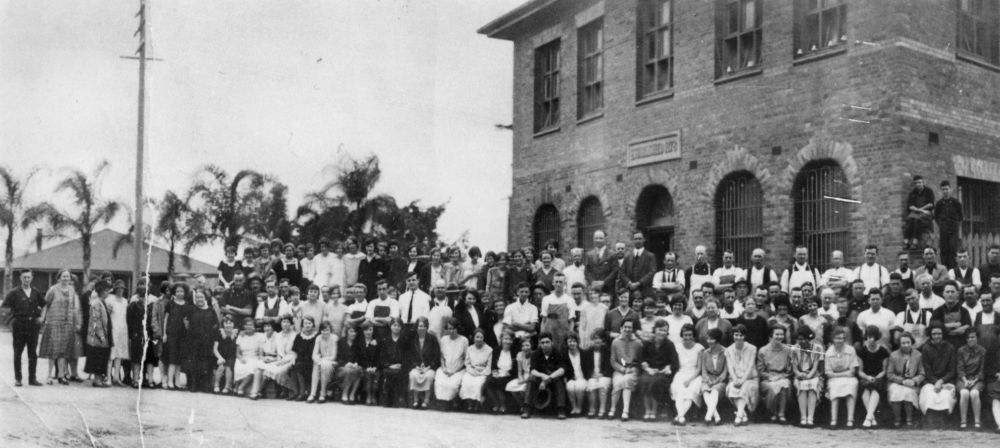
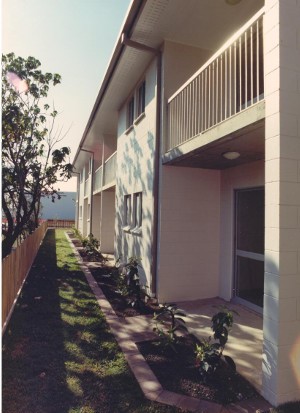

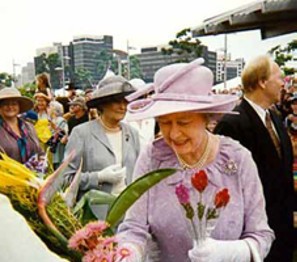
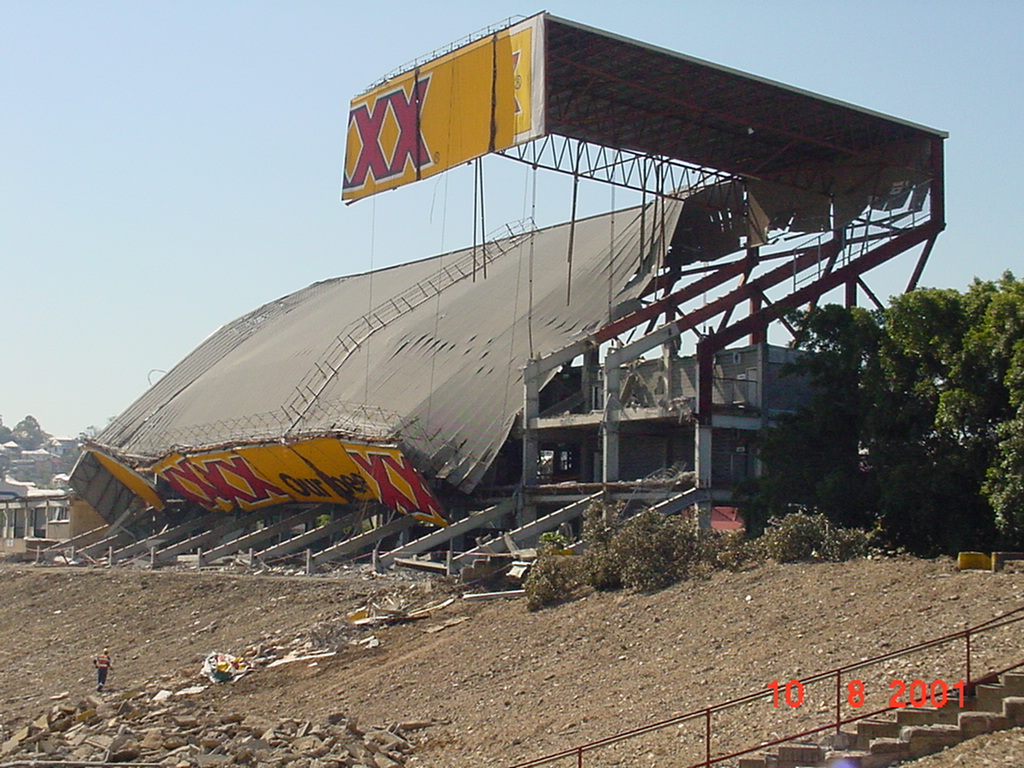
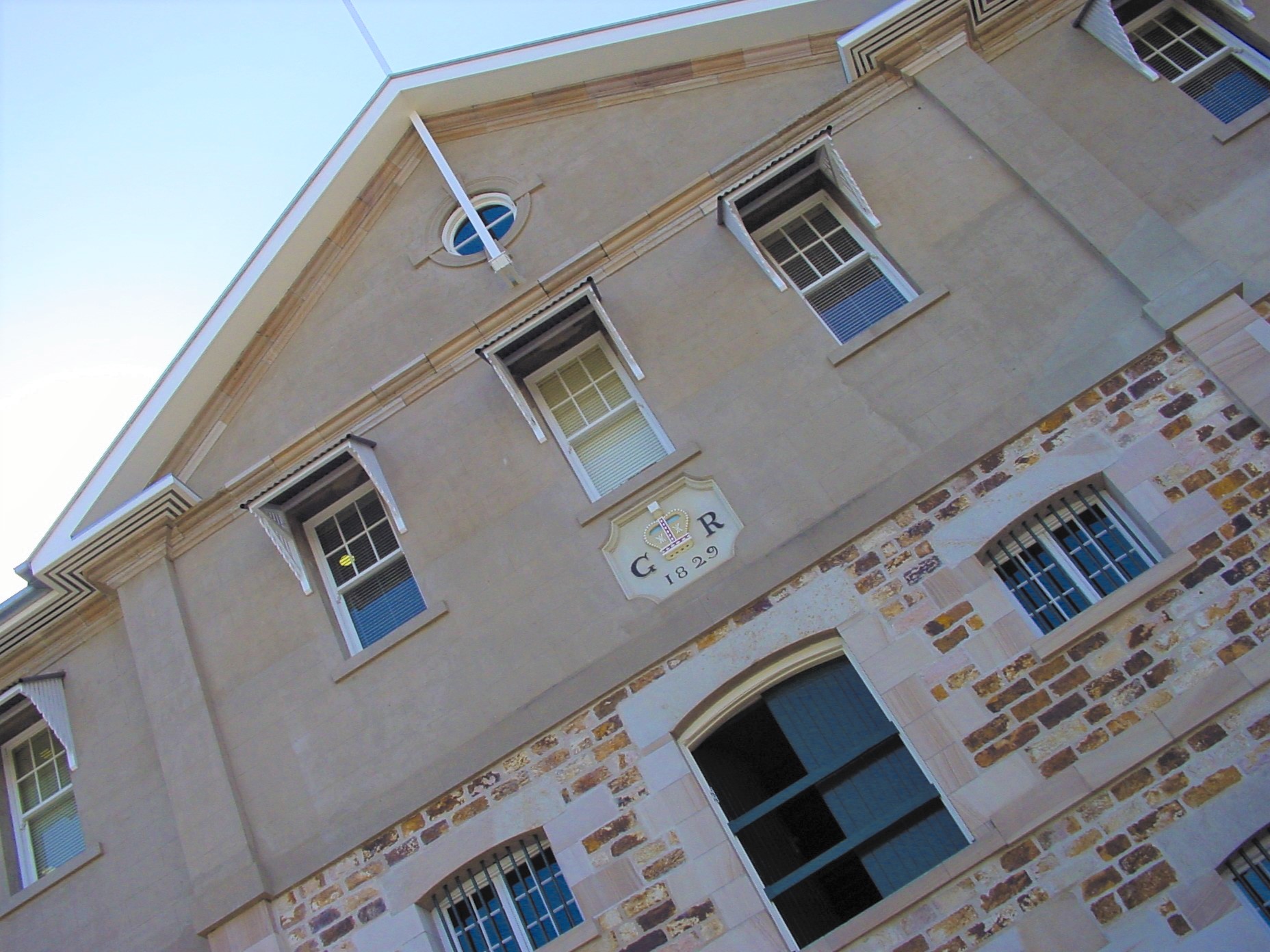
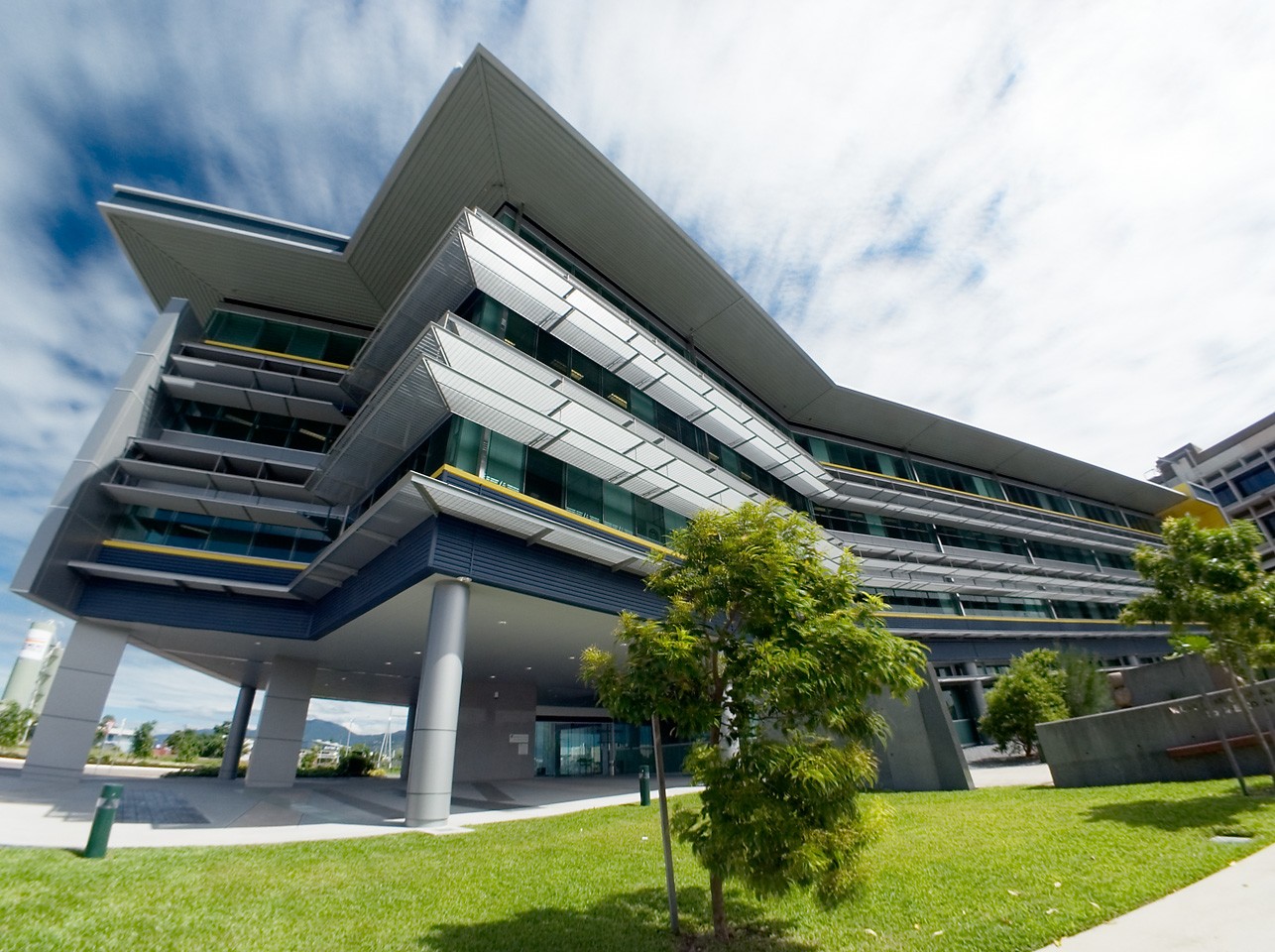
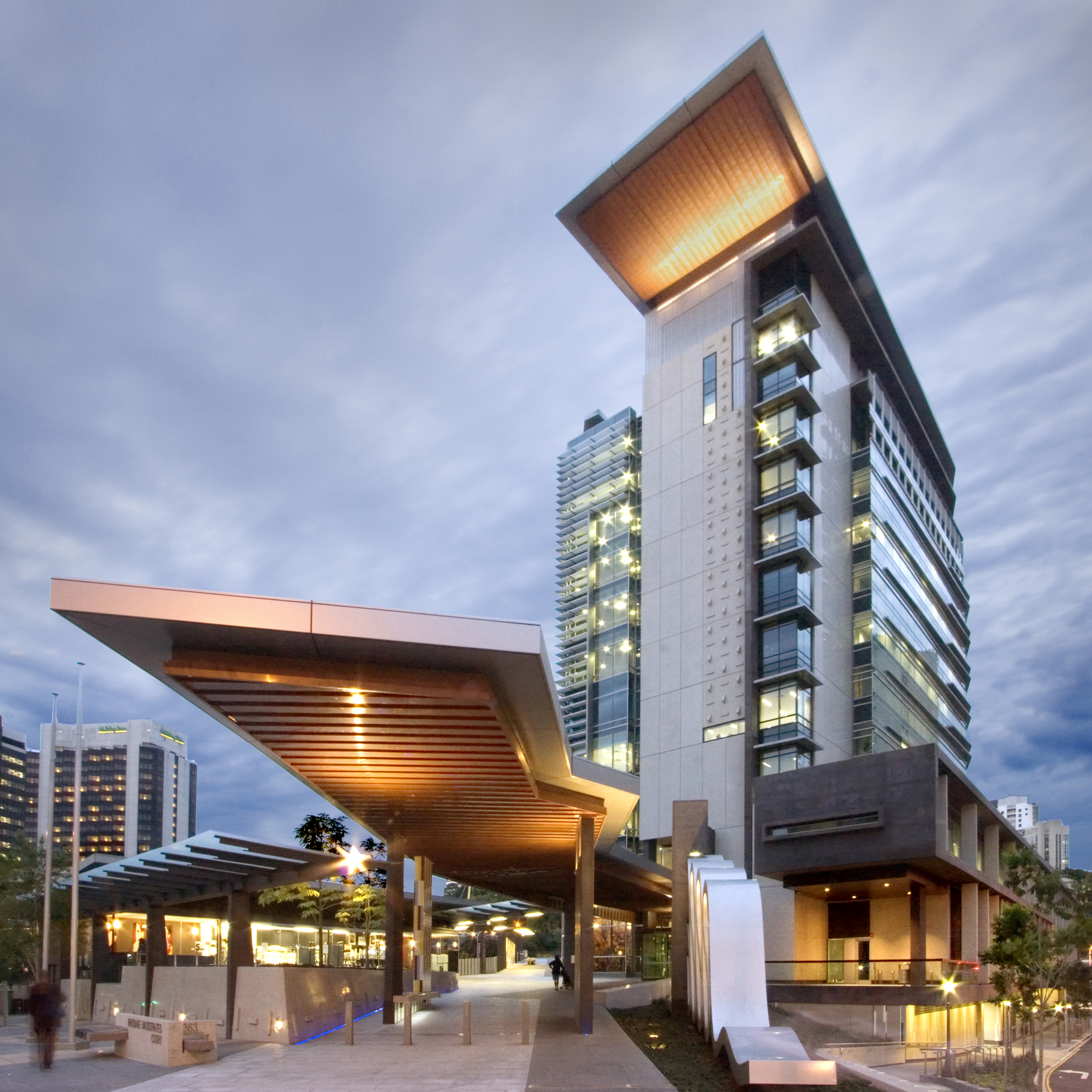
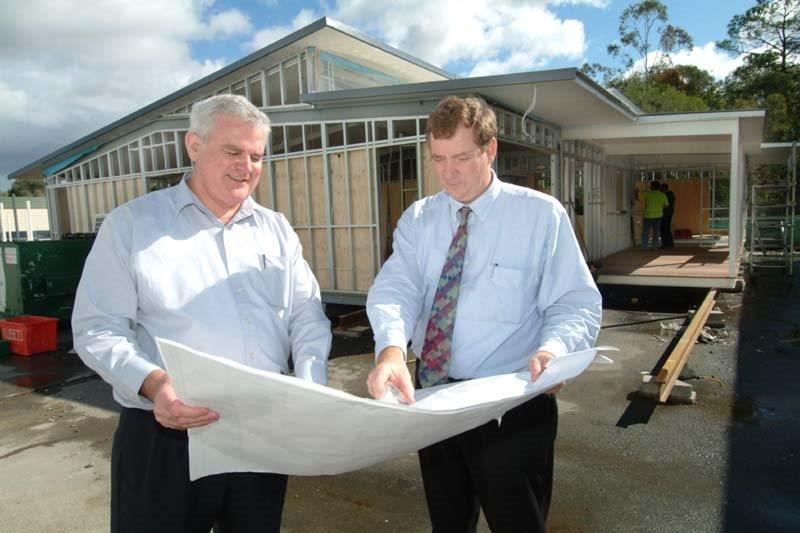
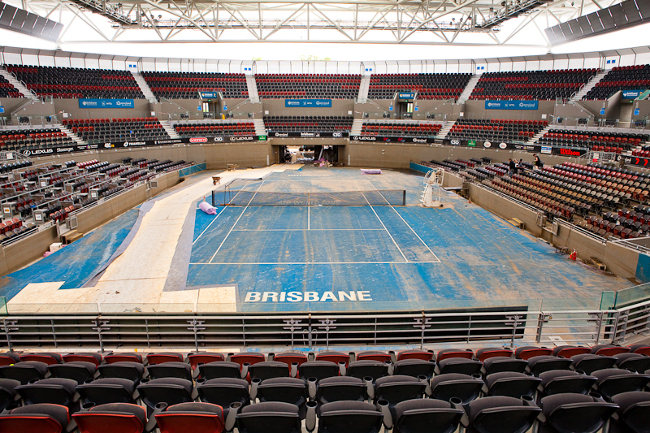
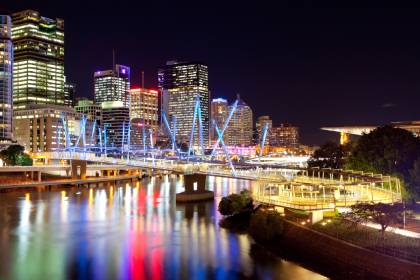
2010s to 2020s
2011
The $144.2 million redevelopment of Carrara Stadium at the Gold Coast into Metricon Stadium is completed. The stadium now caters to crowds of 25,000.
A unique feature of the stadium is the solar roof edge which is connected to Energex's power grid. The solar panelling generates around 20 per cent of the stadium's total electricity needs, effectively making this stadium not only a sporting facility but also a registered power station.
Public Works also assumes a key role in the disaster response and recovery after statewide flooding devastates Queensland between December 2010 and January 2011.
With 75 per cent of the state declared a disaster zone, the recovery task is enormous.
Assessment by Public Works is required on approximately 2,500 government assets and infrastructure across Queensland. Despite this, only three state schools remain closed at the beginning of the school year on 24 January 2011.
A month later severe tropical Cyclone Yasi crosses the North Queensland coast, leaving many families homeless.
The response by Public Works is immediate. Staff undertake damage assessments and maintenance on schools, TAFEs, housing and hospitals.
The response includes the supply of essential items such as food, water, bedding, fuel and generators for evacuation shelters. For those Queenslanders who have lost their homes, the shelters are their only refuge.
This period also sees Public Works progress an extensive capital works program that includes major projects such as the Gold Coast University Hospital, Queensland Children’s Hospital, Cairns Base Hospital and Mackay Base Hospital. Projects completed include the Brisbane Supreme Court and District Court complex.
2012
Following the Queensland state election, the Department of Public Works is renamed the Department of Housing and Public Works.
The period marks the re-opening of Brisbane's heritage-listed Boggo Road Gaol to visitors. First used as a gaol in 1883, the notorious prison is now one of the city's most enduring historical landmarks.
The 9.5 hectare site, known as the Boggo Road Urban Village, also includes an Ecosciences Precinct. This is Australia's first science centre of excellence.
2013
Attention turns to state government cost savings and privatisation.
Building and Asset Services commences operation, amalgamating the long-running commercialised business unit QBuild with Project Services. The division delivers procurement and contract management for building, construction and maintenances services. A large proportion of this building work is outsourced to the private sector.
The government’s rental footprint in Brisbane’s central business district is reduced by over 38,000 square metres. Public Works continues to manage government office accommodation across a portfolio of more than one million square metres of office space.
Ten cyclone shelters are delivered throughout central and north Queensland under a $60 million jointly-funded program between the Queensland Government and the Government of the Emirate of Abu Dhabi.
This comes after the devastating effects of Queensland’s largest natural disasters in 2010 and 2011.
Ten sites in central and northern Queensland are chosen for the cyclone shelters. The Department of Housing and Public Works manages the delivery of eight of these shelters in Proserpine, Bowen, Tully, Port Douglas, Townsville, Ingham, Weipa and Yeppoon. A cyclone shelter in Mackay is delivered by the Department of Education, Training and Employment and a shelter at Edmonton is designed and delivered by the Cairns Regional Council.
The cyclone shelters are designed to withstand a Category Five cyclone and are located in areas deemed to be outside of potential storm tide inundation and not at risk from flood, landslip or other significant hazards
2014
The Queensland Heritage Council lists the Cairns Technical College and High School building on the Queensland Heritage Register.
Designed by architect Nigel Laman Thomas from the Department of Public Works in 1938, the three-storey brick structure reflects the neo-classical style of many public buildings of that period and demonstrates the evolution of state education architecture in Queensland.
Opened during the Second World War, the school is also used for wartime operations. A US Army hospital is built on land that in 2014 is the school oval. Air raid slit trenches are dug in the school's playing fields and part of the school site is used as a military prison.
The Cairns Technical College and High School building (in 2014 called Block A of Cairns State High School) is constructed in 1941, as part of the Queensland Government’s unemployment relief program of the 1930s.
Designed to accommodate secondary and technical classes, the building demonstrates the approach of the Queensland Government to secondary and technical education at this time, with both streams being co-located.
The design of high school buildings is the responsibility of the Department of Public Works. Like other Australian states and territories, the Queensland Government standardises its plans for school buildings to ensure consistency and economy.
Over time, government architects refine these designs to reflect changing educational priorities. Queensland is particularly innovative in its approach to climate control, lighting and ventilation.
In the early days, the establishment of primary schools is considered paramount to the growth of Queensland communities. However, the government is slow to establish state secondary education. It is not until 1912 that a high school system is introduced and separate high schools established in major towns.
Notable for its substantially intact exterior, the Cairns Technical College and High School building is important in demonstrating the characteristics of a brick school building designed by the Department of Public Works in the 1930s.
The principal characteristics include having an expressive and skilful neo-classical styling, three-storeyed form, high quality design, materials and construction, plan layout with north-facing verandah, teacher’s rooms, hat and cloak rooms, south-facing classrooms that are well-ventilated and day-lit, and understorey play space.
The school is the only purpose-built state high school north of Townsville until 1960.
In 2014, the Cairns Technical College and High School building is known as Block A and continues in use as a teaching building for the school.
2016
In response to an urgent need to ease prison overcrowding, Borallan Training and Correctional Centre reopens after a $50 million refurbishment.
First constructed in 1989 and later decommissioned in 2012, the decision to recommission all 492 beds at the centre triggers a large and complex task for Public Works.
The refurbishment of Borallan Training and Correctional Centre faces several challenges. Its urgent need means there is little time for planning.
The security system, much of which had been removed and reused at other correctional centres, is in disrepair, and the hydraulics contractor goes into receivership part way through the project.
To manage these challenges, a Public Works team is established to oversee the refurbishment.
The team draws on its existing procurement contracts to expedite the project, and transfers some 30 hydraulics staff with intimate site knowledge from the previous to the new hydraulics contractor.
In less than nine months, the security system is upgraded to meet standards for correctional centres, a process that would usually take twice that amount of time.
This is followed by a rigorous inspection process and confidence testing.
Making sure all voids are filled with non-pick sealant and furniture for common areas is powder-coated with ruggedized steel, are among the hundreds of details required to make the facility safe and secure for inmates and operational staff.
At this time, a new correctional centre may have taken up to $700 million and three years to build. Instead, the Public Works team deliver the refurbished Borallon Training and Correctional Centre to meet a 10-year service life at a cost of $50 million in just 12 months.
2017
Changes following the Queensland state election broaden the focus of the Department of Housing and Public Works considerably. New portfolio areas include sport and recreation and digital services. The multi-faceted department now employees more than 5,000 staff across Queensland.
A long-term strategic direction for the building and construction industry is established with the release of the Queensland Building Plan. Key reforms are advanced.
Several life-threatening fire incidents in high-rise apartment buildings, both in Australia and overseas, prompt a rapid response from the department to the issue of combustible external wall cladding.
In June 2017, the Non-Conforming Building Products Audit Taskforce is formed to help introduce globally recognised measures to prevent fire incidents caused by combustible cladding.
The measures include a review of almost 28,000 government building certification records and a detailed assessment of 1,039 government buildings in Queensland.
In the same year, the Queensland Government establishes Australia’s first chain of responsibility laws so that everyone in the building products supply chain has responsibility for ensuring products are fit for their intended purpose.
2018
The Gold Coast takes centre stage in April 2018 during the Commonwealth Games. Public Works is responsible for the Rugby Sevens venue, Cbus Super Stadium and the base for security personnel at the Tallebudgera Recreation Centre. The department also delivers maintenance to key service facilities including police and ambulance stations.
Jointly funded by the Australian and Queensland governments, the Household Resilience Program is introduced, offering grants to support people in coastal parts of Queensland improve the resilience of their homes against cyclones.
The highly successful program is later extended as part of the Queensland Government’s COVID-19 economic recovery package.
2019
Public Works staff assist Townsville residents to recover from devastating monsoonal floods in late January and early February 2019.
The region sees a staggering 1,200mm of rainfall in just seven days, the equivalent of Townsville’s average annual rainfall.
The department assesses and coordinates repairs to 775 state government assets, including public housing properties and schools.
In August 2019, plans are announced to rebuild QBuild by employing 300 trade-based field staff, including 60 apprentices, over the next three years.
2020
A worldwide pandemic sparked by the spread of the coronavirus disease (COVID-19) reaches Queensland. A public health emergency is declared on 29 January 2020.
Health and safety measures include rolling lockdowns, restrictions on movement, physical distancing, mask-wearing, and border closures. It is the first time Queensland has closed its borders in 100 years.
The pandemic brings a shift to the way people work. Many staff are now working from home or remotely.
Despite these challenges, Public Works remains operational and provides vital services to the community.
Projects include a partnership with Arts Queensland to manage a $6.7 million refurbishment of the Cairns Centre of Contemporary Arts, which sees the cultural facility reopen with a new identity.
Renamed Bulmba-ja (meaning house or place), the facility brings the unique stories of Aboriginal and Torres Strait Islander peoples into focus. It includes a state-of-the-art façade to digitally display artworks by local Indigenous artists, along with culturally responsive and flexible office spaces, a culturally landscaped courtyard, Yarning Circle and Elder’s lounge.
In the same year, the Queensland Country Bank stadium opens in Townsville. The stadium is home to the North Queensland Cowboys rugby league team.
Late in the year, machinery-of-government changes lead to the separation of Public Works from Housing, and the establishment of the Department of Energy and Public Works.
The change reflects a growing focus by government to address global warming through renewable energy sources and sustainable building practices.
2021
The COVID-19 pandemic continues to affect all aspects of life in Queensland.
The period marks a concerted effort by government to encourage women, who make up as little as five per cent of trade roles in Queensland’s $46 billion building and construction industry, to join the sector. This includes a trial to increase the number of female tradespeople ‘on the tools’ at public housing construction sites.
In the same year, a smoke alarm program to install smoke alarms in more than 64,000 government housing properties across Queensland is completed.
Several major projects are advanced including the Cairns Convention Centre, Thomas Dixon Centre renovation and the new Performing Arts Complex.
